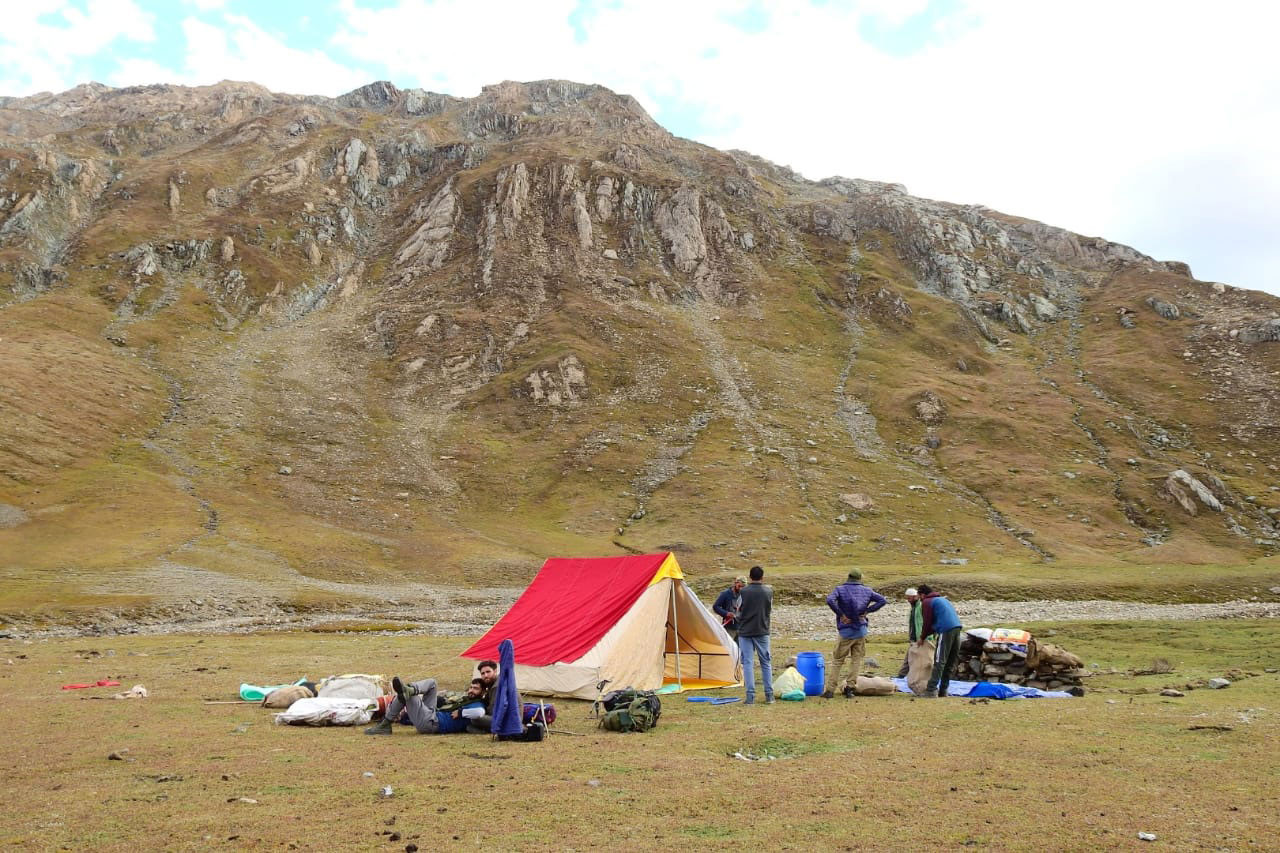Conservation Optimism is a global community dedicated to sharing optimistic stories about conservation and to making people feel empowered to act for nature.
“If the dark clouds come from down the valley, we will get heavy rains. If they come from the side of the glacier—from above us, the rains will pass away,” said Nizaam chacha, a nomadic Bakarwal pastoralist, as he urged us inside his dok (traditional mud hut). As dawn broke, the air was misty and frigid from last night’s rain. Rashid chacha led us across the Tramsar Pass in Warwan Valley, Kashmir, the vista, a blank canvas of fluff as far as the eyes could see. “We will have to dig it out of the snow. The cameras must be at least 6-8 feet below”, said Rashid chacha. We were out to collect data from camera traps placed to study the presence and abundance of Snow Leopards in the Jammu and Kashmir region.
The very idea of researching population estimates of Snow Leopards in uncharted territories is a daunting one. Now, when that place in question is Jammu and Kashmir, a land riddled with an unstable political past and an unpredictable future, the task may seem impossible. A place where the sound of bombs and bullets has muted the exclamations from researchers' mouths when they make a significant find. A place where placing camera traps, the main means of studying Snow Leopards, invokes uncertainties of being rounded up for espionage.
Fast forward to two years since the start of the project, several news outlets and reports flash statistics of 15 recorded individuals across Jammu and Kashmir (a number that is already increasing with newer information). For a region that had not recorded the presence of Snow Leopards until a few years ago, this new population estimate is groundbreaking and exciting. But behind the statistics that define its importance and the beautiful images of this magnificent cat are stories of people, local people, that make the impossible possible.
Having led the Snow Leopard population estimation project in Himachal Pradesh, Nature Conservation Foundation’s Rinchen Tobge, Tanzin Thuktan, Rigzen Dorjay, Kesang Chunit, and Dorje Angrup periodically take turns to lead expeditions in various parts of Jammu and Kashmir. They all hail from the tiny villages of Kibber in Himachal Pradesh and Saspochey in Ladakh. With at least 5-10 years of camera trapping experience, each member brings unparalleled technical abilities to this elite team. From sniffing out potential Snow Leopard trails from days-old scent marking to knowing how to place the camera such that when a cat walks in front of it that one time across 60 days, you get an image of its beautiful body and not just a blurry, nondescript tail. These guys are the crème de la crème of the Snow Leopard field researchers in the country. What tends to get forgotten is that they are also fathers, brothers and friends to many who worry about their well-being with each passing day without connection in a land that is ever-so-often termed “unsafe”.
You may also like to read
Crucially, none of the technical capabilities of these brave researchers would be of any use without the heart, guidance and support of the local people across the high Himalayas of Jammu and Kashmir. Nishu, a 20-year-old boy from the Surnoo village in the Dachhan area of Kishtwar National Park, trekked 24km from the roadhead to his home with a 25kg ration pack on his back. Over the next five days, he would lead the team across the serpentine Kiyar Valley, all 60km on foot, through the silence of snow, into territories deemed inaccessible until the summer sun thaws several feet of snow. Mushtaq, of the sleepy village of Sukhnai, deep in Warwan Valley, fed us and extended his home to us as we spent days exploring the region for camera trap locations. Khurshid and Riyaz chacha of Barnoi village, in the Tulail Valley on the Pakistan border, helped navigate two ration horses across the waist-deep snow in Dissan Pass, even as sleet battered their faces. Akram from Honzar village, who was still recovering from the shock of losing his neighbours to a devastating cloud burst, carefully navigated and led us through avalanche-prone stretches deep inside the Nanth Valley of Kishtwar National Park. Rakesh Kumar of Kibber village in Dachhan helped us navigate out of the flooded Kiyar Valley we had visited to retrieve cameras. Teshi Chering of Kabban, a man closing in on the sixth decade of his life, who agreed to guide us into the remote reaches of Darlang Valley on a phone call, slept under rocky outcrops even as the temperatures hit below freezing and made sure that the team’s donkey remained safe through the night.
The list of local heroes who make our work possible is endless, but it is also important to realise that they are not just names on a list. For every Snow Leopard photo that has excited you, it is important to acknowledge the commitment, sacrifice and desire of these individuals that made it possible.
After several hours of digging through the snow at Tramsar Pass, Rashid chacha and our team were left dejected. No camera was in sight. “I guess some things need more time!” he exclaimed. As we went back down the Tramsar pass, towards Nizam’s dok, the clouds were neither closing in from below nor above us. The waning evening sun reminded us that there is more to do, but another time!










